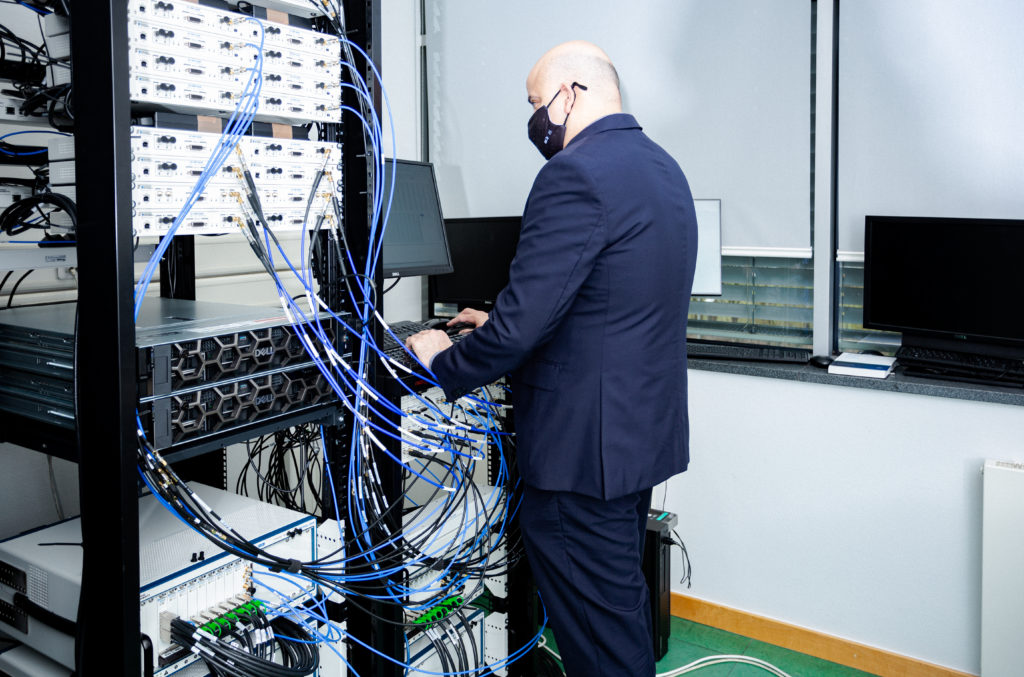When 4G first became available, no one could have predicted the massive changes it would bring to all of our lives. Suddenly, ride-sharing apps became a technological possibility. We began calling one another on our mobiles with video. We grew accustomed to flashy — and fast — images in the palms of our hands, whether we were looking for a first date, a good meal, or an old friend. In fact, 4G was the backbone technology that turned our phones into essential devices, extensions of ourselves that we rely on in ways we could never have imagined.
Now 5G is here — and another revolution in our (digital) lives is coming with it. As we stand on the threshold, many have started to wonder what could be next. Here in Luxembourg, SnT, alongside industry partner SES, is helping to answer that question. Their research will explore how satellite technology can help enable our new 5G world — and how satellites can do even more to advance 5G capabilities.

“The integration of satellite and terrestrial communications networks is a complex research challenge as we enter the 5G era, so I’m very excited about our new INSTRUCT (INtegrated Satellite-TeRrestrial Systems for Ubiquitous Beyond 5G CommunicaTions) partnership and the research we’ll be undertaking,” says Prof. Symeon Chatzinotas, Co-Head of the Signal Processing and Communications research group at SnT, and Principal Investigator on the project.
“The partnership with SES over the years has been a driving force for some of the most exciting research outcomes of SnT.”
Prof. Björn Ottersten, SnT Tweet
The INSTRUCT project, which is being carried out in cooperation with industry partners SES, will last six years and fund seventeen separate research projects. “Each of the seventeen projects is being pursued by a team made up of an academic supervisor from SnT, an industry supervisor from SES, and either a doctoral or postdoctoral researcher,” explains Chatzinotas. It is a format that has a long tradition at SnT, which has been collaborating with SES on cutting-edge research for the past decade. “The partnership with SES over the years has been a driving force for some of the most exciting research outcomes of SnT,” says Prof. Björn Ottersten, Director of SnT.
“Integration between our satellite communications network and our Earth-bound wireless systems is an important piece to making the 5G puzzle really work.”
Prof. Symeon Chatzinotas, SnT Tweet
The INSTRUCT project envisions a fundamental shift in the emerging 5G wireless system towards closer integration with satellite systems. This shift will help make 5G significantly more inclusive, ubiquitous and affordable — bringing high-speed internet to even remote or mobile locations. Connecting 5G to the satellite communications network will also help ensure that increasingly important technologies like the Internet of Things and Machine Type Communications are as reliable as possible. “Integration between our satellite communications network and our Earth-bound wireless systems is an important piece to making the 5G puzzle really work,” says Chatzinotas.

“Our business relies on the technology we use, and we are embracing innovations that support current markets and unlock new opportunities for the customers we serve,” says Ruy Pinto, Chief Technical Officer at SES. “With the backing of the FNR and SnT, we are sure we will be able to further advance on integrated satellite-terrestrial networks”.
The project was made possible thanks to the Industrial Partnership Block Grant (IPBG) programme, a grant awarded by the Luxembourg National Research Fund. “The IPBG programme is quickly becoming an essential mechanism to funnel research funding towards complex industrial challenges,” says Andreea Monnat, Deputy Chief Executive Officer at FNR. “It is a priority of Luxembourg to establish an economy that is focused on innovation, and the longstanding partnership between SES and SnT is an excellent example of the positive results of such collaborations.”